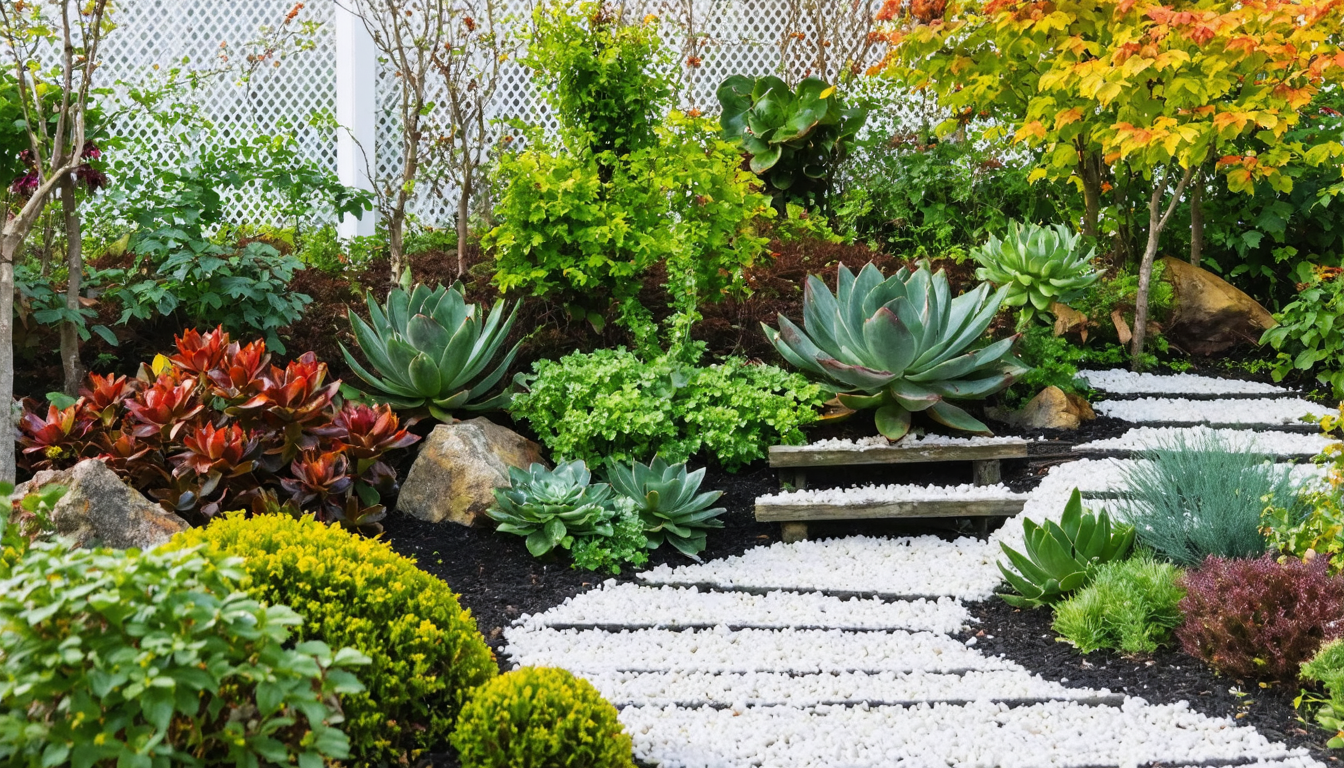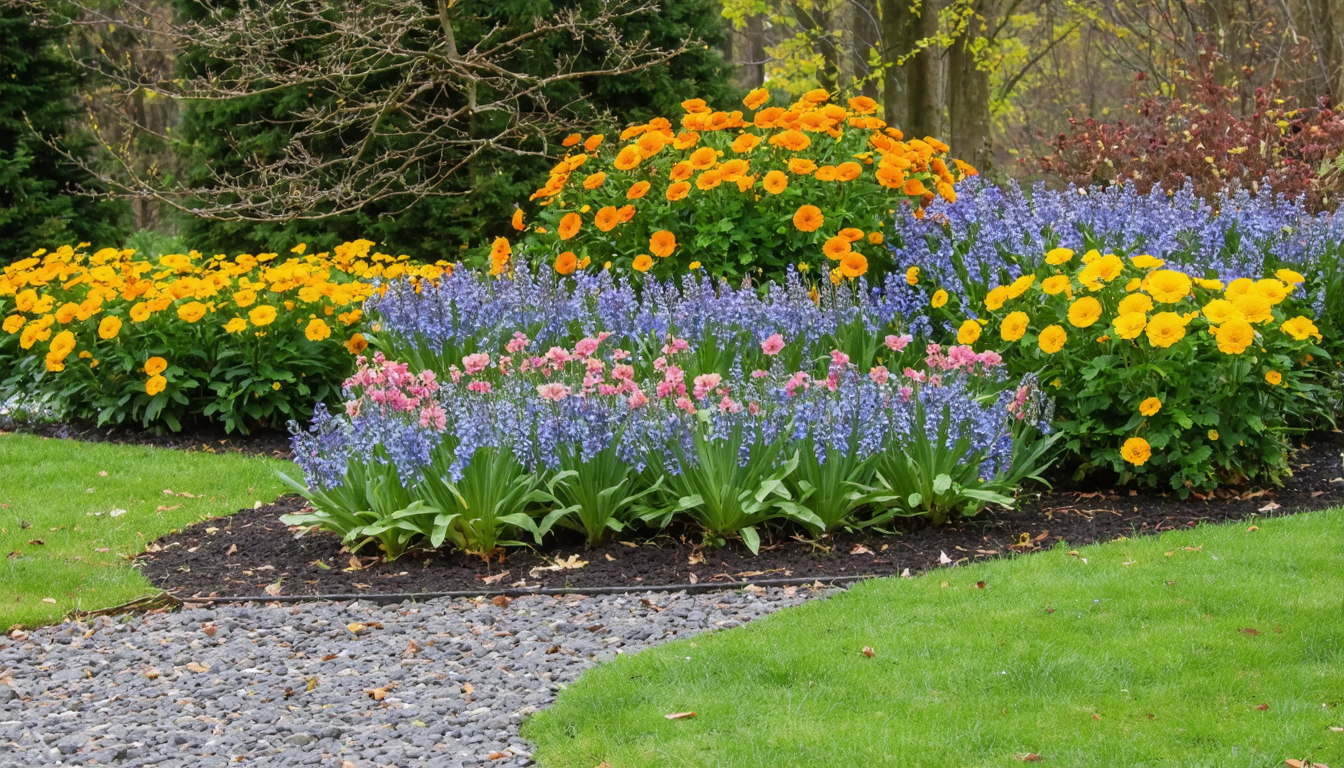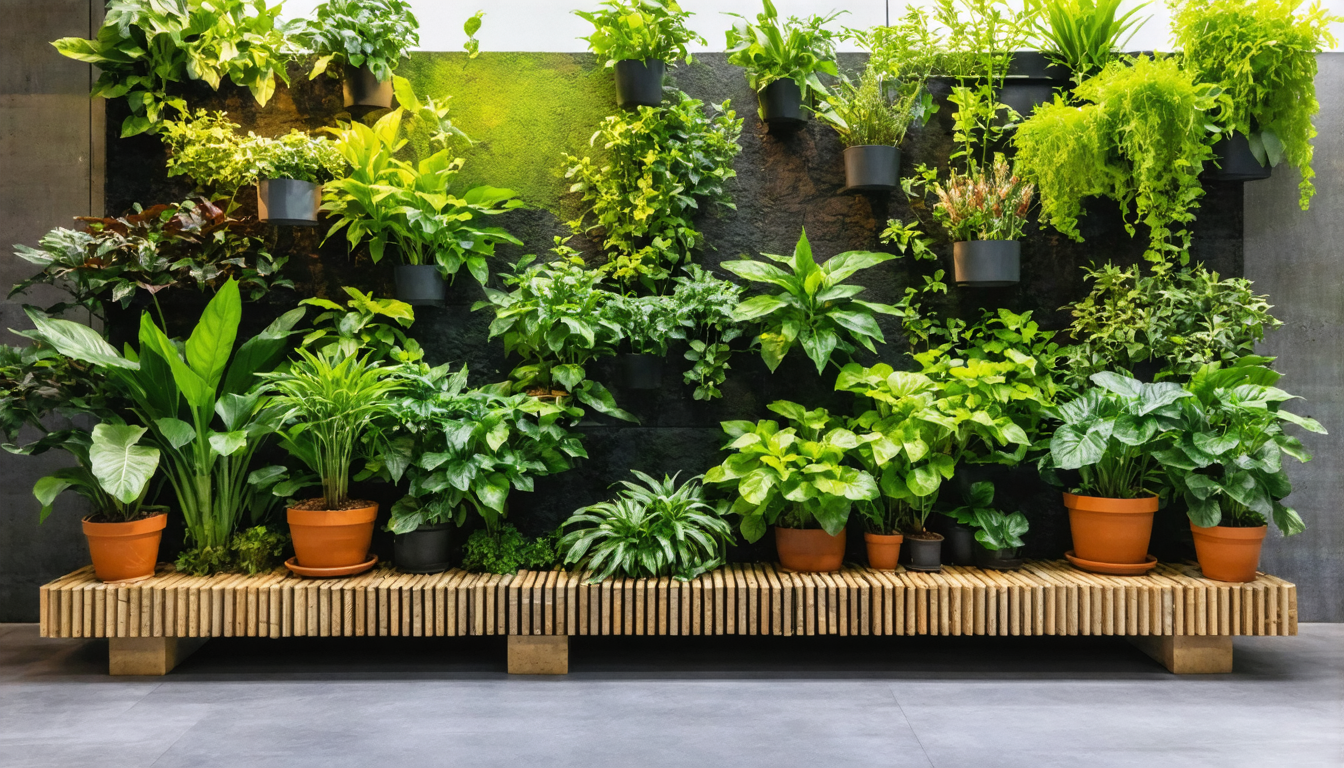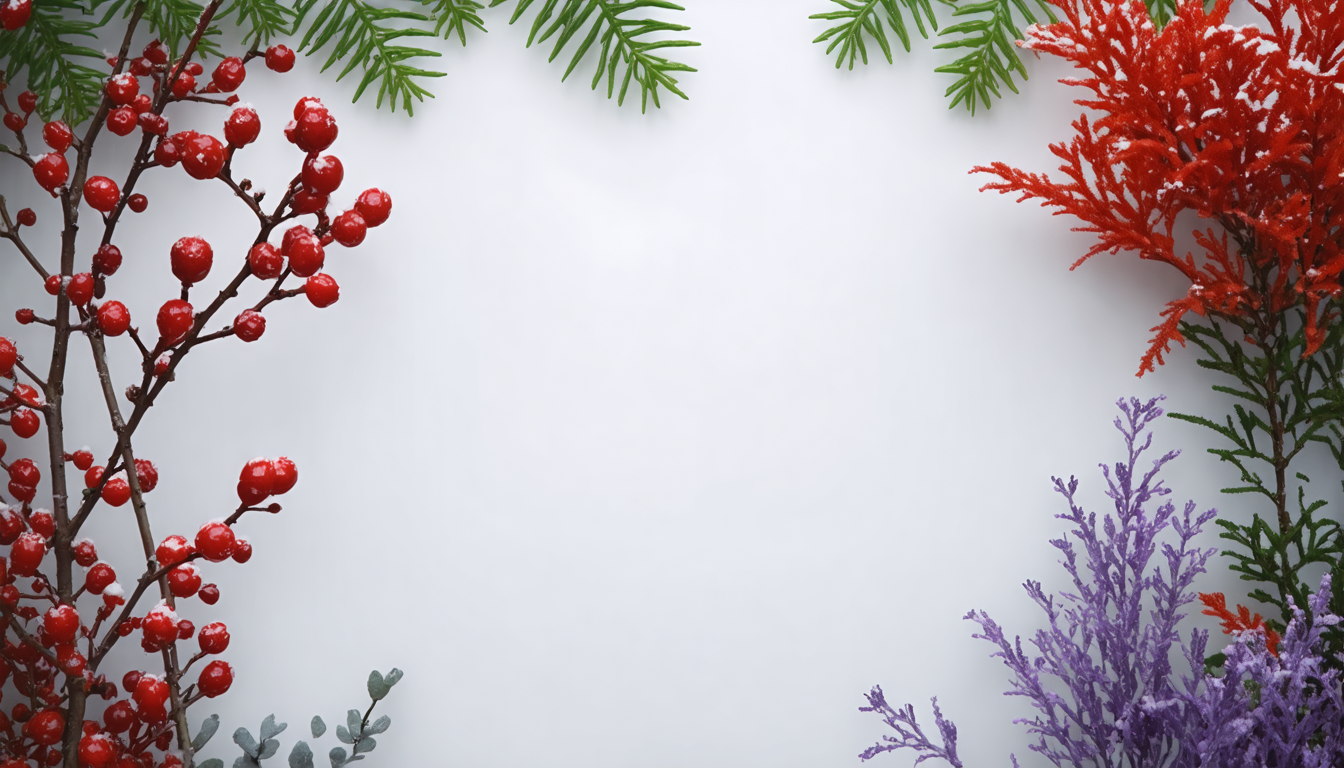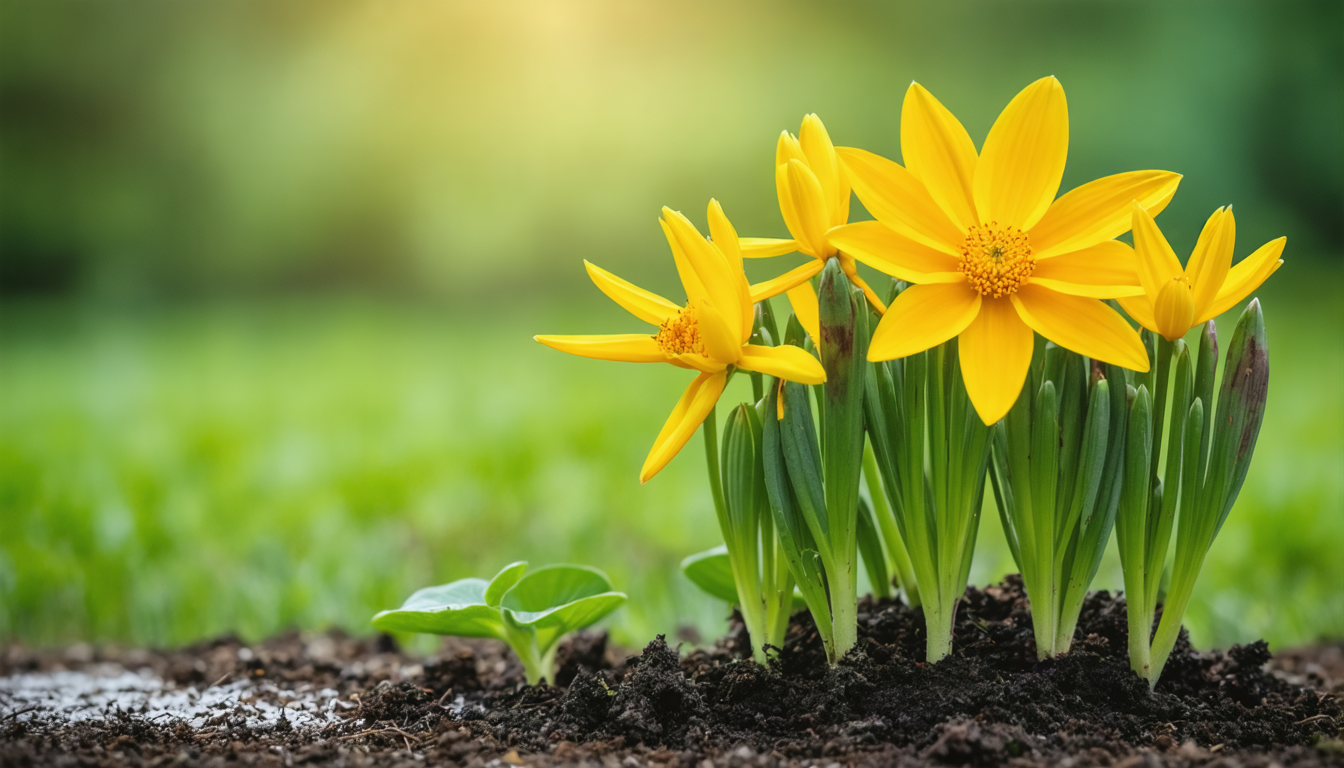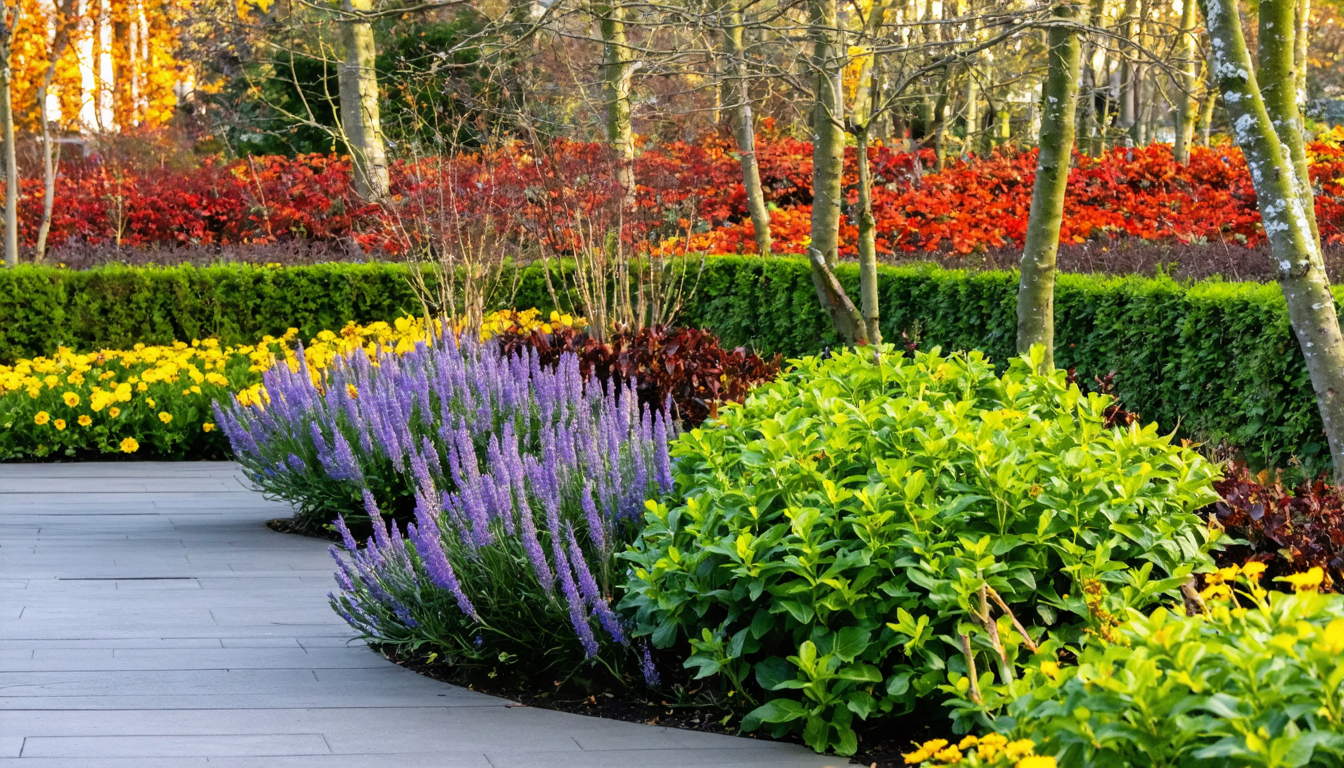
Understanding the Challenge: Why It’s Hard to Grow Under Trees
The Root of the Problem: More Than Just Shade
Many gardeners face the frustrating reality of a bare, patchy area beneath their beautiful trees. The primary culprit is a combination of factors that create a uniquely challenging environment for most plants.
- Intense Shade: The dense canopy of leaves acts as a natural sunblock, severely limiting the amount of direct sunlight that reaches the ground.
- Root Competition: The tree’s extensive root system is highly efficient at absorbing all available water and essential nutrients from the soil, leaving little for other plants.
- Dry Soil: This is often called a “rain shadow.” The tree’s canopy can intercept and divert rainfall, preventing it from reaching the soil directly underneath.
- Soil Compaction: Over time, foot traffic and the sheer weight of the tree can compress the soil, reducing air pockets and making it difficult for roots to penetrate.
Common Struggles for Gardeners
This difficult environment leads to several specific and recurring issues for homeowners.
- A perpetually muddy or dusty patch that is unusable and unattractive.
- A relentless and discouraging battle against stubborn weeds that seem to be the only thing that will grow.
- Wasted time, money, and effort on failed attempts to grow a traditional lawn or sun-loving flowers.
- Anxiety about accidentally damaging a prized, mature tree with landscaping efforts.
Top-Tier Solutions for Shaded Ground Under Trees
Solution 1: The Living Carpet – Shade-Tolerant Ground Covers
This approach involves planting low-growing, spreading plants that are naturally adapted to thrive in low-light conditions and can effectively crowd out weeds.
Best Plant Choices:
| Condition | Plant Examples |
|---|---|
| For Dry Shade | Epimedium (Barrenwort), Liriope (Lilyturf), Pachysandra |
| For Moist Shade | Ajuga (Bugleweed), Lamium (Dead Nettle), Sweet Woodruff |
| Native Favorites | Asarum canadense (Wild Ginger), Heuchera (Coral Bells) |
Solution 2: The Layered Look – Create a Shade Garden
For a more dynamic and textured landscape, create a dedicated garden bed using a mix of perennials, ferns, and small shrubs.
How to Plant Without Harming Tree Roots:
- Carefully tuck small plants into existing pockets of soil between larger roots.
- Avoid deep digging or tilling. Instead, add a thin layer (1-2 inches) of compost on top of the soil as a top-dressing to improve fertility without disturbing the root system.
Plant Recommendations: Hostas, Ferns (e.g., Japanese Painted Fern), Hellebores (Lenten Rose), Astilbe.
Solution 3: The Hardscape Route – Inorganic Mulches & Pathways
For the ultimate low-maintenance solution, use non-living materials to cover the ground. This instantly creates a neat and tidy appearance.
Options:
- Shredded Bark or Wood Chips: The classic choice. Excellent for suppressing weeds, retaining soil moisture, and slowly adding organic matter to the soil as it decomposes.
- Gravel or River Rock: Provides excellent drainage and offers a clean, modern aesthetic. Use a landscape fabric underneath to prevent weeds.
- Stepping Stones or a Flagstone Path: Creates a functional and attractive feature, defining a walkway and reducing soil compaction from foot traffic.
Solution 4: The Eco-Friendly Base – Living Mulch with Moss
For a unique, soft, and enchanting ground cover, consider cultivating moss. It thrives in the very conditions that challenge other plants.
Unique Insight: You can actively propagate moss using a “moss slurry.” Simply blend collected moss with buttermilk or plain yogurt to create a paint-like consistency. Paint this mixture onto damp soil, rocks, or even statuary in your shaded area. In the right conditions (shady, moist, and slightly acidic), the moss spores will establish and spread, creating a beautiful green carpet over time.
Comparing Your Options: Which Solution is Right for You?
| Solution | Best For | Maintenance Level | Impact on Tree |
|---|---|---|---|
| Ground Covers | A natural, living look; erosion control | Low (once established) | Positive (improves soil) |
| Shade Garden | Aesthetic appeal & biodiversity | Medium (watering, weeding) | Neutral to Positive |
| Inorganic Mulch | Easiest, most immediate solution | Very Low | Positive (retains moisture) |
| Moss Garden | Unique, low-traffic, acidic soil areas | Very Low | Positive |
Frequently Asked Questions (FAQs)
Can I just put topsoil and grass seed under my tree?
This is generally not recommended. Adding a thick layer of topsoil can smother and suffocate the tree’s critical surface roots. Furthermore, grass struggles immensely with the intense shade, root competition, and typically dry soil, making this a high-effort, low-reward strategy that is likely to fail and potentially harm the tree.
Will landscaping under my tree harm it?
If done correctly, landscaping will not harm your tree and can even be beneficial. The key is to avoid damaging major surface roots during planting. Crucially, never pile soil or mulch directly against the tree trunk in a “volcano mulch” style. This practice traps moisture against the bark, which can lead to rot, disease, and insect infestation. Always keep mulch a few inches away from the trunk base.
What is the absolute easiest solution for shaded ground under trees?
Applying a 2-3 inch layer of shredded wood mulch or arborist wood chips is the easiest and most beneficial solution for both you and the tree. It instantly improves the area’s appearance, effectively suppresses weeds, helps retain soil moisture, and slowly enriches the soil as it decomposes.
Are there any ground covers I should avoid?
Yes, it’s important to avoid aggressive, invasive spreaders that can escape your garden and harm local ecosystems. Steer clear of English Ivy, Vinca (Periwinkle), and Wintercreeper. These plants can form dense mats that choke out native plants and, in the case of ivy, can even climb and damage the tree’s bark.
